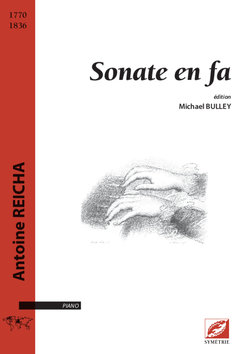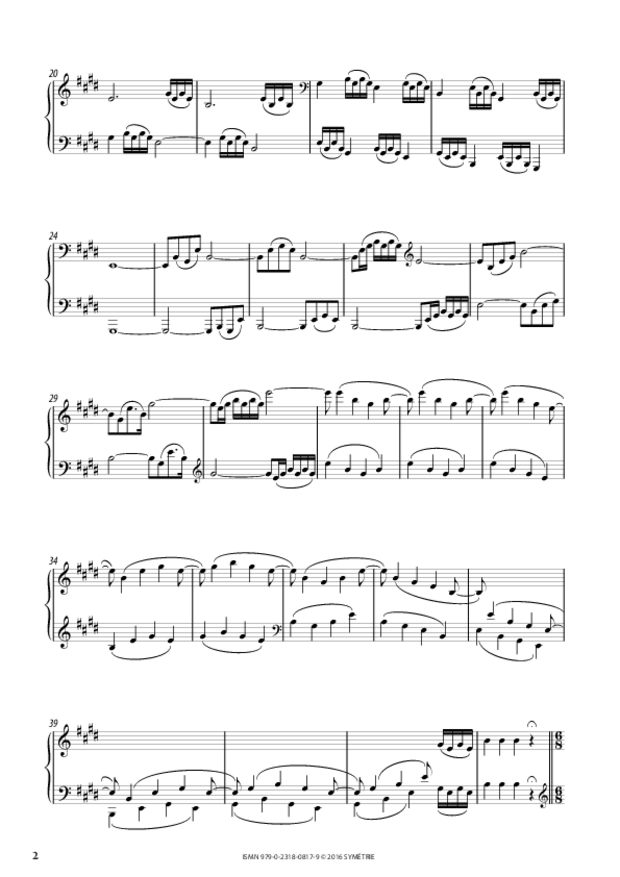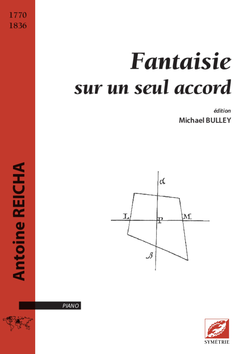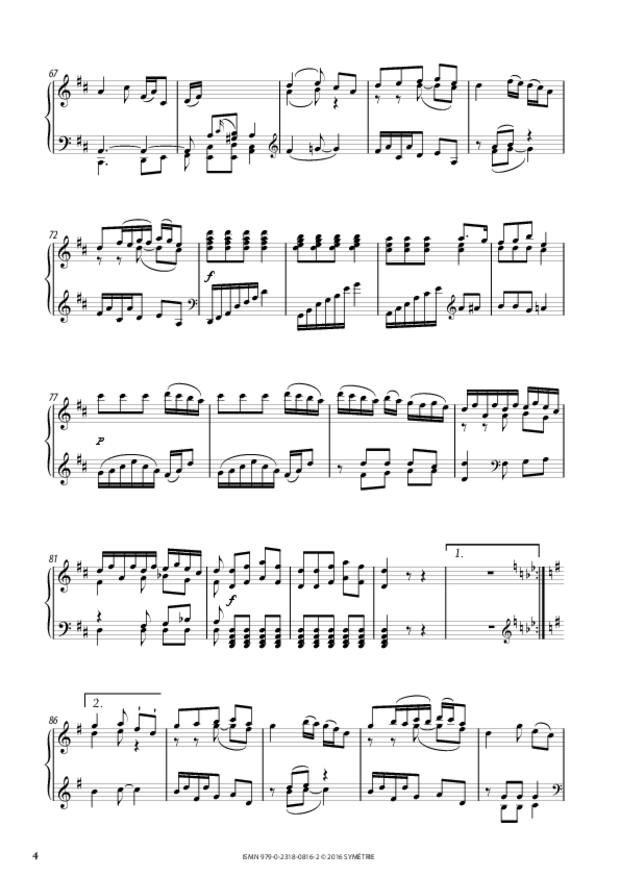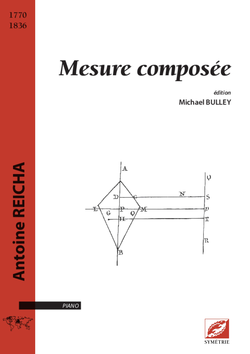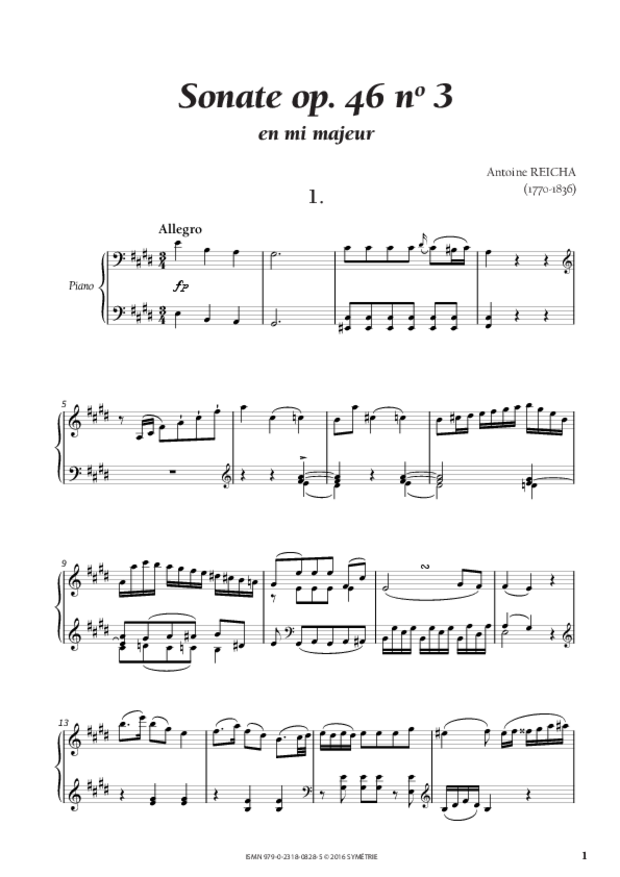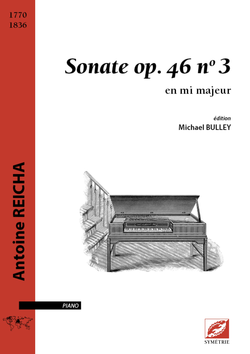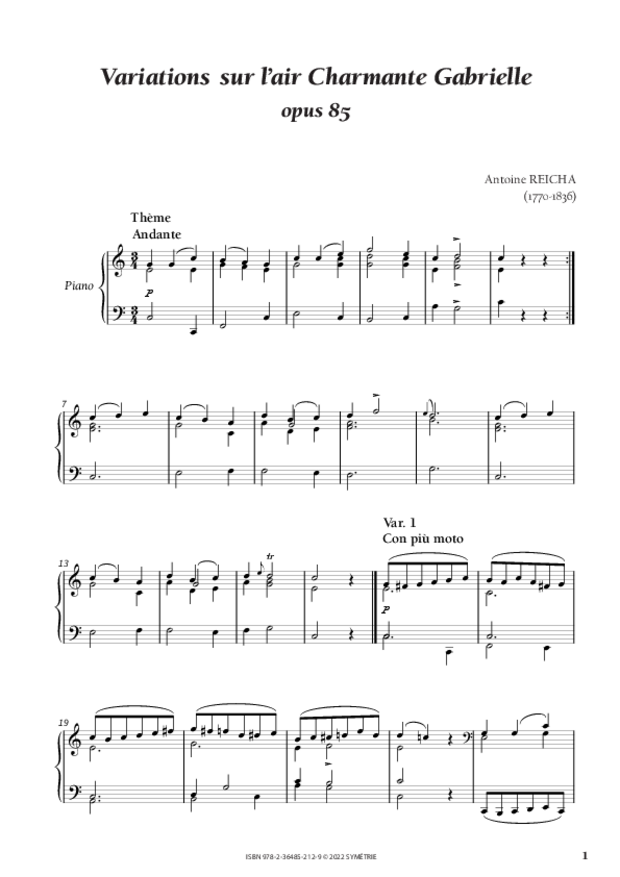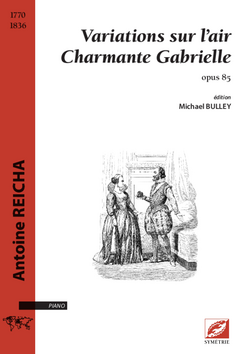The first thing that stands out in the overture is the instrumentation, which includes two harps and a celeste. We hear these instruments, in an andante in 3/8, for 22 of the first 24 bars. Their timbre should make us think of Sapho’s lyre, which plays an important rôle in this opera. There follows an allegro in 4/4 up to bar 221, when the andante of the beginning returns for seven bars. The final 100 bars are an allegro in 4/4 with new themes.
Does Reicha follow his own precepts in this overture? In his treatise Art du compositeur dramatique, he says that an overture nearly always begins with a short passage, usually sombre, if the work is a tragedy or a melodrama. The overture to his opera Natalie, for example, matches that description exactly. In Sapho, by contrast, the introduction has a simple, innocent feeling about it. Must we say, then, that Sapho is neither tragedy nor melodrama? Is ‘romance’ perhaps the right term?
The two allegro passages are full of energy, sometimes venturing far from the home key. Sometimes, too, the insistent modulations might remind us of overtures by Rossini! It is only in this dazzling overture that you will hear any themes that are contained in it. Let us conclude therefore with a quotation from Reicha in which he justifies his practice in this respect: “it is not in the interest of the composer to use up his ideas in advance and thus deprive them of part of their freshness.”
Nomenclature
2 flûtes, 2 hautbois, 2 clarinettes, 2 bassons, 4 cors, 3 trombones, timbales, 2 harpes, 1 célesta, cordes
All available forms
-
sheet music pour orchestre
-
conducteur de lecture A4
2 flûtes, 2 hautbois, 2 clarinettes, 2 bassons, 4 cors, 3 trombones, timbales, 2 harpes, 1 célesta, cordes · 8 min · 21 x 29.7 cm · stapled booklet · 60 pages · ISMN 979-0-2318-0688-5
Publisher : Symétrie
Price : €35.00
-
conducteur A3
29.7 x 42 cm · spiral booklet · ISMN 979-0-2318-0891-9
Publisher : Symétrie
Price : €58.00
-
matériel
114 pages · ISMN 979-0-2318-0893-3
Publisher : Symétrie
Price : €280.00
-

